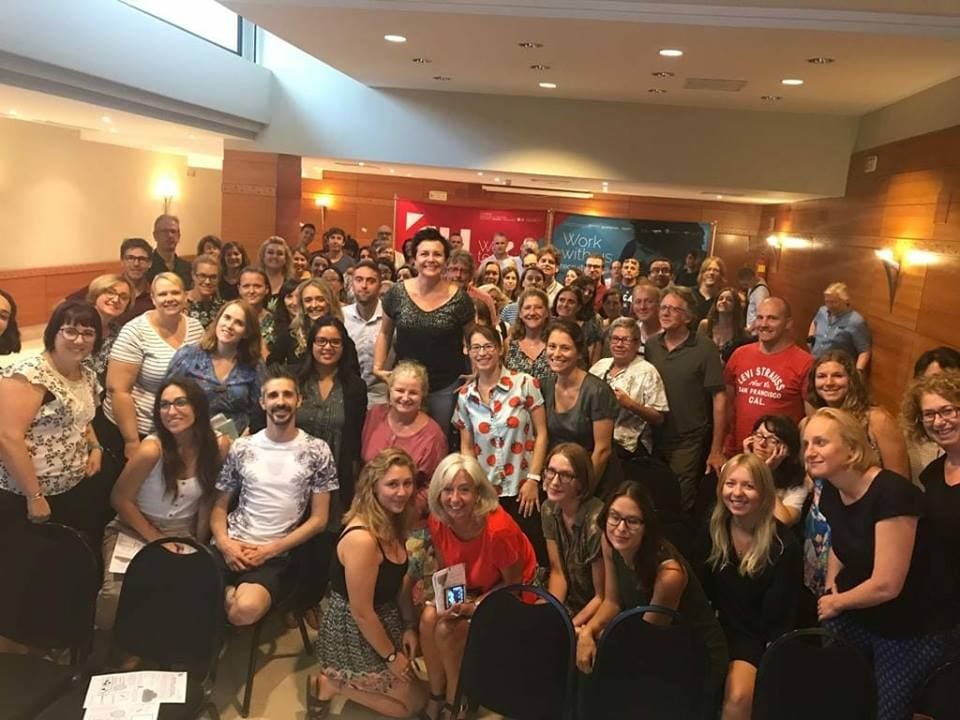For the first #ELTChat of 2017, we discussed the topic: “How to deal with reading tasks in an active and entertaining way”.
Some ideas:
fionaljp suggested doing webquests and shared the link to one stop English’s page which has topic-based webquests for teens including Shakespeare, Chinese New Year and La Tomatina. MConca16 added that Macmillan’s Inspiration site also has some. You could also design our own webquest which could be catered to your learners’ interests. Marisa_C shared a link to her wequest on using twitter and teachingright shared one on the solar system.
bellinguist mentioned that now we can do jigsaw readings making use of learners’ devices, giving them a QR code so they could navigate quickly and easily to their text.
Marisa_C said that she enjoys giving learners different parts of the text which they have to summarise and share, working together as a group to put the text into the correct order. This idea of ordering the text is also useful for getting learners to think about linking and reference words. Also, give learners more information ‘hot off the press’ – they decide where they would insert the information so the text is still coherent. And, if you want to really challenge learners working with a short text, she suggested cutting up all the text into individual words for them to order 🙂 seburnt also suggested making a wordle from the text and showing it to learners as a pre-reading activity to predict content.
To add in a competitive element, you could do a reading race or ‘grass skirt’ activity. Another option to get learners out of their seats and moving around is to do a running dictation with the comprehension questions.
SueAnnan suggested getting learners to write the next paragraph, which you could then compare with the original text.
jorgeguillen talked about doing information gap activities in which learners then use the information they have to complete a task. MConca16 suggested this could be reading about festivals in the UK, then roleplaying the parts of a tourist and tour guide.
DamiBeneyto and Marisa_C are both fans of giving learners the same news article taken from different sources so learners can compare how the information is given. Newspaper quizzes were also mentioned – give learners copies of free newspapers and ask them to write questions for another team. sophie_cy added that developing quizzes and other activities for classmates is fun and engaging and GioLic1976 said that he does the same as then learners, rather than the teacher, choose what to focus on. Another idea for using newspapers and magazines from GemmaELT was to match headlines to articles. And when working with headlines, fionaljp said we can elicit content, keywords and work on prediction too.
teachingright mentioned as well using appropriate strategies when working on reading tasks and Marisa_C as well talked about working with microskills to support our learners when reading.
Marisa_C suggested an activity for narrative texts – before reading, find two images which learners compare, finding the differences and then read the text and identify which picture matches with it. Here’s a link to Marisa_C’s blog with some other ideas for working with images. naomishema uses video as an introduction to reading and you can read her series of blogposts on her experiment here. SueAnnan also mentioned the idea of combining reading with a video/audio task in which learners first work with the video/audio, then fact check through the reading.
We talked as well about a strong lead-in to the text will make it more engaging for learners and naomishema reminded us about Penny Ur saying how the choice of topic is less important than what you do with it. ITLegge said that whilst learners are reading, they can add emojis to the text and share with a partner after reading how the text made them feel. And I added as well that a post-reading discussion of the content will also make learners value the text as more than just another reading activity. tesolmatthew said that he finds himself doing increasingly more pre-reading activities, working on prediction amongst other things – this means learners have much more of an impetus to read the text when asked to do so. He shared a link to cecilianobreelt‘s lesson on Humans of New York.
GemmaELT talked about the struggles of getting learners to do the reading task well – she was specifically talking about during online courses, but I think this can be a challenge which we face with any learners who aren’t engaged in the text or interested in doing the task well. Marisa_C suggested working with short texts and focussing on one sub-skill to ease them into reading.
A couple of people also shared links to SeanBanville‘s pages: freeeslmaterials and famouspeoplelessons. There are some ideas as well on this British Council page which MConc16 shared. ETProfessional shared this link to Cristina Cabal’s blog with ideas on bringing reading texts to life. Also, here’s a link to SueAnnan’s summary from an #ELTChat back in 2013 on the topic of exploting reading texts which has more ideas. Gemma ELT shared the image on the right from Alex_Corbitt.
 I had a great time Thursday morning, sharing some ideas for prep-free speaking activities with the fab team of teachers at ELI in Sevilla. Below the presentation you can find links to the activities I presented and if anything is missing, I’ll write about it soon!
I had a great time Thursday morning, sharing some ideas for prep-free speaking activities with the fab team of teachers at ELI in Sevilla. Below the presentation you can find links to the activities I presented and if anything is missing, I’ll write about it soon!
